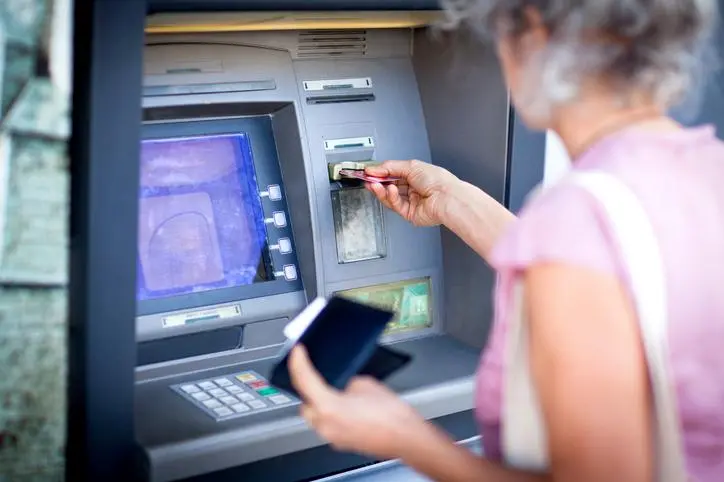PHOTO
Most banking systems across the world are well-placed to absorb the economic shocks triggered by the coronavirus, but a second wave of the virus, leading to new blanket lockdowns or self-imposed changes in consumers' behaviour, poses a significant threat, Moody's Investors Service said in a report on Thursday.
"In contrast to the financial crisis, the banking system is more likely to act as a shock absorber rather than an amplifier," said Nick Hill, managing director - Banking at Moody's Investors Service. "But a second wave of the pandemic that leads to new lockdowns and economic turmoil could cause more lasting damage to banks' credit profiles."
Moody's bullish outlook is in sharp contrast to the dismal projections made by S&P Global about an estimated combined loan losses of $2.1 trillion faced by banks across the globe by the end of 2021, including a hit of $1.3 trillion this year, more than doubling the 2019 level as a result of the pandemic crisis.
Around 60 per cent of the losses are likely to be in Asia-Pacific S&P, although the highest relative increases - at more than double on average compared with 2019 - will occur in North America and Western Europe. S&P estimate that the top 200 rated banks represent about two-thirds of global bank lending.
Moody's said in its report that after ten years of broadly benign economic conditions, and relentless regulatory pressure to reinforce balance sheets, most banking systems are in good shape and can withstand the inevitable rise in bad debts over the coming months. "In addition, actions taken by central banks and governments to soften the virus impact have slowed the rise in asset risk and underpinned liquidity and funding," the global rating agency said in its bullish outlook on global banking.
Banks with more diversified business models - notably those with capital markets activities - will also prove more robust than those focused on more susceptible activities like lending to small businesses and corporates, said Moody's.
However, projecting a different scenario of the global banking industry, S&P Global Ratings said recovery of the sector would stretch to 2023 and beyond.
"Covid-19 and the oil price shock of 2020 are taking a heavy toll on global banks. We anticipate it will be difficult for the financial strength ratings on financial institutions to return to pre-crisis levels. We don't expect the world's largest banking sectors, including more than half of G20's, to recover to pre-Covid-19 levels until 2023, or beyond," said S&P, which has taken 335 negative rating actions globally since the outbreak began.
"The hit on financial institutions globally has been unambiguously negative," said S&P Global Ratings credit analyst Gavin Gunning.
"We have already negatively revised the economic or industry trends underpinning the financial strength of many banking jurisdictions globally. This trend should persist. Further, we have seen negative rating momentum affecting financial institutions in most major banking jurisdictions, indicating that downside risks are to the fore," said Gunning.
The rating firm said recovery to pre-Covid-19 levels would unlikely come before end-2022 even for less-affected banking jurisdictions. These jurisdictions include China, Canada, Singapore, Hong Kong, South Korea, and Saudi Arabia.
"Risks remain firmly on the downside for these banking jurisdictions, in our view," said Gunning.
S&P noted that in 2019, credit losses were near historical lows in almost all the higher-income countries in Asia-Pacific. Years of benign economic conditions have helped the region. "We estimate that the Covid-19 shock to these economies will drive a multifold increase in credit losses. Economic recovery in the subsequent period should ease the credit losses, in our view."
For the US and Canadian banking systems in 2020 and 2021, pandemic-related loan losses will likely sharply increase. "Such losses should tail off thereafter, pending an economic rebound envisaged in our base case. Credit losses will likely rise significantly from historically low levels for European banks in 2020, and remain high in 2021. A full economic recovery could take several years under our base case," said S&P.
While emerging-market banks will likely see a sharp increase in credit losses in 2020, there is potential for a gradual improvement in the following years if economic activity rebounds, it said.
Khaleej Times: Copyright © 2017 Khaleej Times. All Rights Reserved. Provided by SyndiGate Media Inc. ( www.Syndigate.info).
Disclaimer: The content of this article is syndicated or provided to this website from an external third party provider. We are not responsible for, and do not control, such external websites, entities, applications or media publishers. The body of the text is provided on an “as is” and “as available” basis and has not been edited in any way. Neither we nor our affiliates guarantee the accuracy of or endorse the views or opinions expressed in this article. Read our full disclaimer policy here.












